15 Most Effective Local Advertising Ideas for your Businesses
Every day, our buying decisions are greatly influenced by the series of advertisements we see on the streets every day, ads on the Internet, newspapers, magazines, cinemas, etc. It’s clear that local advertising is an integral part of life and the local elegance we see everywhere.
On the other hand, advertising is also essential in propagating and enticing the public to implement social objectives such as family planning, preventing social crimes, fighting environmental pollution, ensuring safety, anti-cancer, preventing AIDS, etc.
This article will take you through 15 Most Effective Local Advertising Ideas For Small Businesses to leverage them for your business. It not only makes your business more popular, has more potential customers but also good for society.
Local advertising definition & examples
Local advertising targets consumers near a business location with messages that represent the local market. A company that wants to use local slang or influencers to attract local consumers will profit from local marketing.
The messages using that approach are proximity-based. Local advertising materials invest in establishing a relationship with the communities. Tactics such as local influencers, ads, or public event hosting are all examples of local marketing.
In general, local advertising is the type of advertising that primarily informs the customer that the product is available at a certain point of sale to attract customers to the store (such as a store opening advertisement or an advertisement of supermarkets).
Read this post from the beauty brand Frank Body on Instagram. Frank uses local marketing by connecting their goods to a common cause of its home country, in Australia:
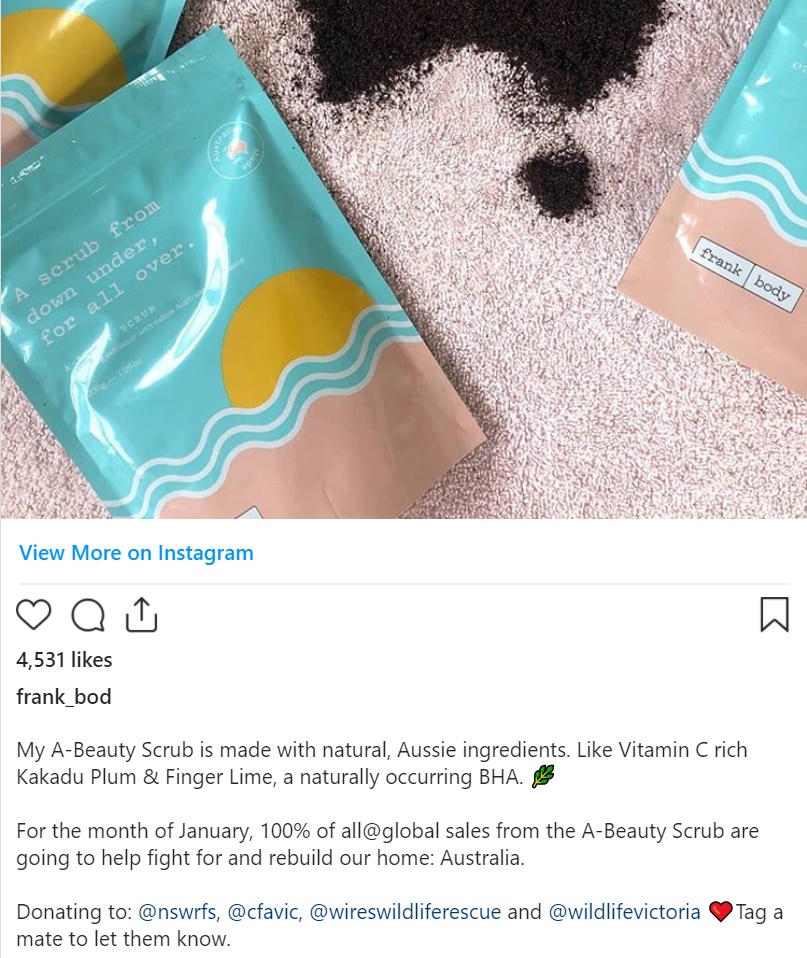
A post like this demonstrates how small-scale local advertising can begin and then spread to the masses by applying global sales. This sale is establishing Frank’s image as a brand that cares for the local residents. Small companies benefit exponentially from local marketing, especially by using of local assets to create a loyal customer base.
Nonetheless, you lack the basis for interacting with a vital part of the business without knowing the local audiences.
For example, let’s assume you’re leading advertising efforts for a tech company, and you’ve discovered that a common assumption about your brand is that your laptops are of poorer quality than competitors.
You could invite graduates, young people, and business owners in your area to conduct essential job functions on your in-store laptops, recording views, and turning your view. Afterward, the participants express high praise for their followers on social media, naming your brand. You’ve now built a user-generated advertising campaign using those posts.
Here’s how local advertising demonstrates that, as a result, focusing on locality and market research can resonate with a broad public.
15 Local advertising ideas to help people find your business
Online local advertising
Try out these seven suggestions if you’d like to start promoting your company to more local leads.
1. Using Pay-Per-Click(PPC) Ads to attract interested leads
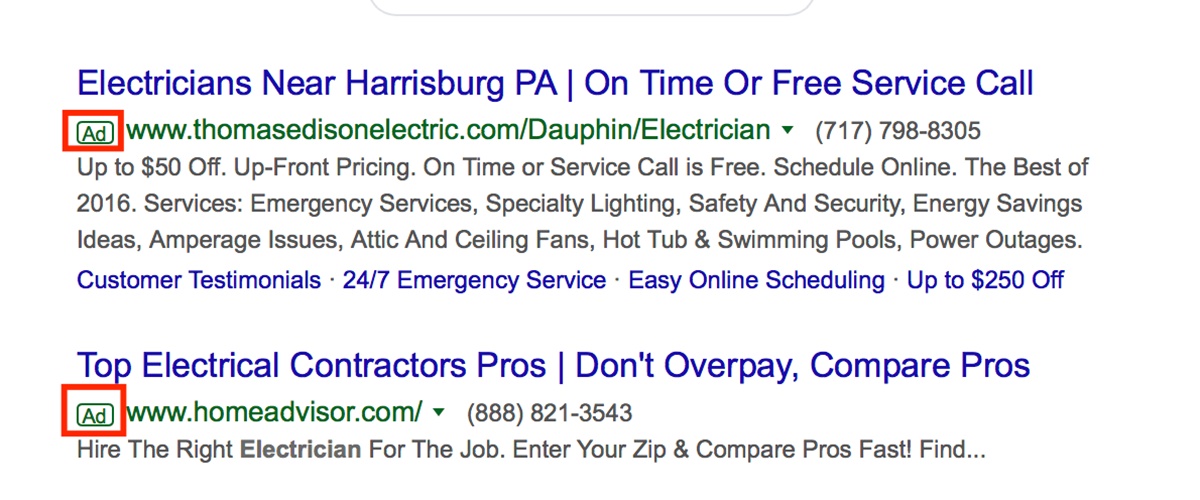
Pay-per-click (PPC) advertising is now one of the best local advertising ideas online. Those paid ads are displayed above organic listings at the top of the search results.
Now let us take a glance at how to start running PPC ads.
- Select Keywords:
You must pick the keywords for your ad to get ready with PPC ads. In search results, your keywords cause your ad to appear. If you are looking for your company to get your ad in front of relevant leads, you must pick the right keywords to help them find the business.
If you’d like to find the appropriate keywords for your advertising, begin by doing keyword research. Keyword analysis helps guide you in selecting relevant keywords for your ads.
You’ll want to concentrate mainly on long-tail keywords when you perform keyword analysis. Those keywords have three or more words in them. A long-tail keyword example is “flower shops near Washington DC, USA.”

With PPC ads, long-tail keywords are great, because they push more specific leads and keep your cost-per-click (CPC) low. With short-tail keywords, the CPC occasionally gets higher as more companies are bidding on the keyword, which leads to more competition.
When you prefer long-tail keywords, you’ll use your PPC ad to achieve better results.
- Bid for ad placement:
When you have picked your keywords, you will be biding for placement of your ad. You must set your maximum price, which is the amount that you are prepared to pay each time someone clicks on your ad. The sum of the offer is variable and is subject to change as required.
Use a keyword research tool to help you get an idea for your maximum bid. Keyword analysis tools will give you average keyword CPC.
Your “quality score and bid quantity” decide your ad’s placement. Quality score refers to factors such as click-through rate and ad relevance. It is best to have a low bid quantity and top quality score, rather than low quality score and high bid.
- Launch your ads:
You start your campaign once you have your ad placement. You decide how long the campaign will last, and when you want it to run. PPC gives full control over your advertisement to your local company and helps you run the best marketing campaign. If you are providing services such as home improvement, homeless encampment cleanup, waste management etc. in your local areas, then PPC is the best choice.
2. Run ads on social media
Social media is another great paying for ads option. Social ads allow you to reach out on social media platforms to interesting leads. It is an excellent medium for reaching people where they are involved already.
A lot of the local clients spend their time on social media. On social media, the average user spends 28 percent of their Internet time. For social media ads, you have an outstanding opportunity to reach out to people. Pick your site to start running social media ads.
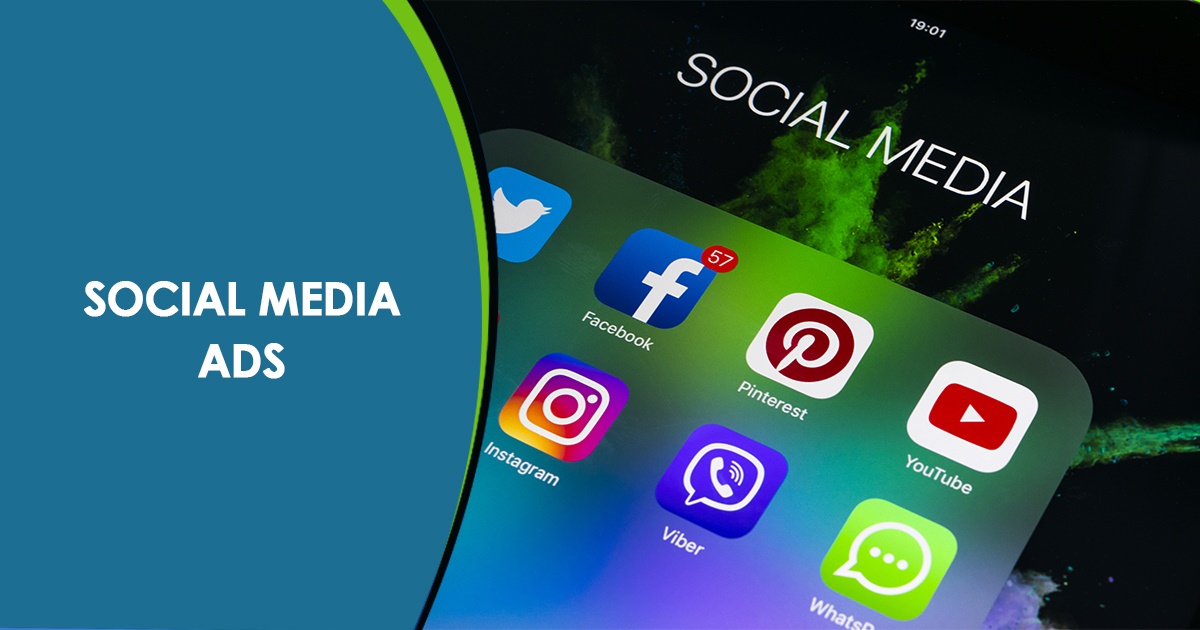
From any number of platforms, you can select, including Twitter, Facebook, Instagram, Pinterest, LinkedIn.
You’ll want to pick channels that most visit your audience. By looking at the profiles for what platform you can decide which platforms they’re likely to be on.
When you have chosen your network, choose the type of ad you wish to run. Your type of ad is platform-based. Many media networks offer more formats, such as video and images, while others stick to individual formats.
If you chose to run an ad on Facebook, for example, you would have multiple ad choices, such as video advertising to carousel advertising.
You will be choosing the ad format that fits best for your campaign. When you have your setup, you can determine which parameters you want to reach. Social media allows you to set specific targeting settings to reach the most interested people in your product.
You can target customers by location, demographics, browsing behavior, buying habits, and more.
Social media ads are great for coming up with more leads. You can create social media ads as a local organization, which only reach local customers. Take advantage of new channels like Threads where it’s easy to get followers and grow your presence.
It’s a smart way to help the right people get to you.
3. Claim your Google my business listing
For local business owners, Google My Business is the most necessary tool. If you’ve not claimed your Google My Business listing, you’re missing the big opportunity to promote your business locally.
Firstly, begin with apply for your local listing . When you have your listing, you are going to fill in the details about it.
Verify or add that your name, address, telephone number, and operating hours are correct.
All platforms should be consistent with that information. If your company goes by a nickname, such as “Jane’s” instead of “Jane’s Steaks and Subs,” use your business’s full name on all their listings.
Once the information is verified, add a blurb about your company.
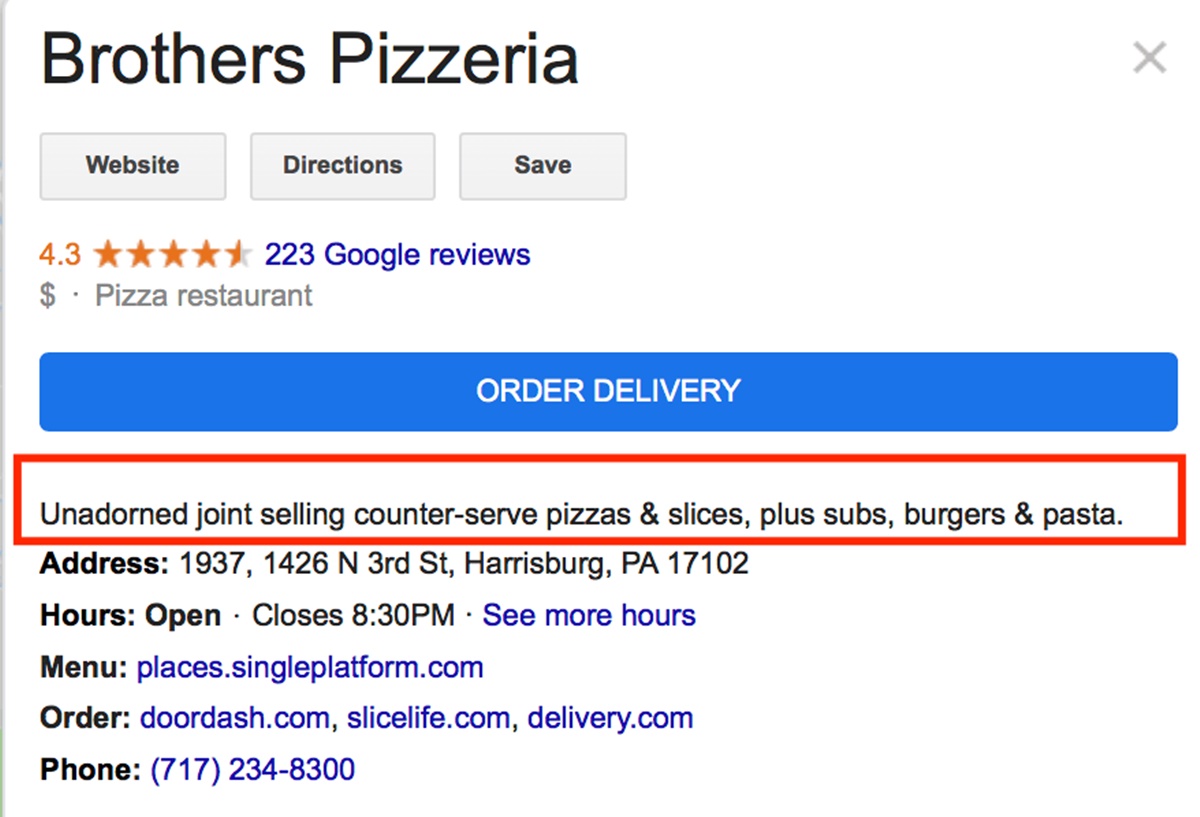
This blurb gives more information to your audience on your business. The explanation in this example tells people this pizzeria serves pizzas, burgers, subs, and pasta. It’s fast, but it provides valuable information to your audience.
Include pictures in your listing, too. Images offer useful insight to your audience about your business. They can see photos of your goods, team, and company, which can excite them to visit your site.
You’ll improve your chances of featuring in the local SEO 3-pack by filling out your listing completely. This box shows up in the results of the local search. This is a box containing three area Google My Business listings.
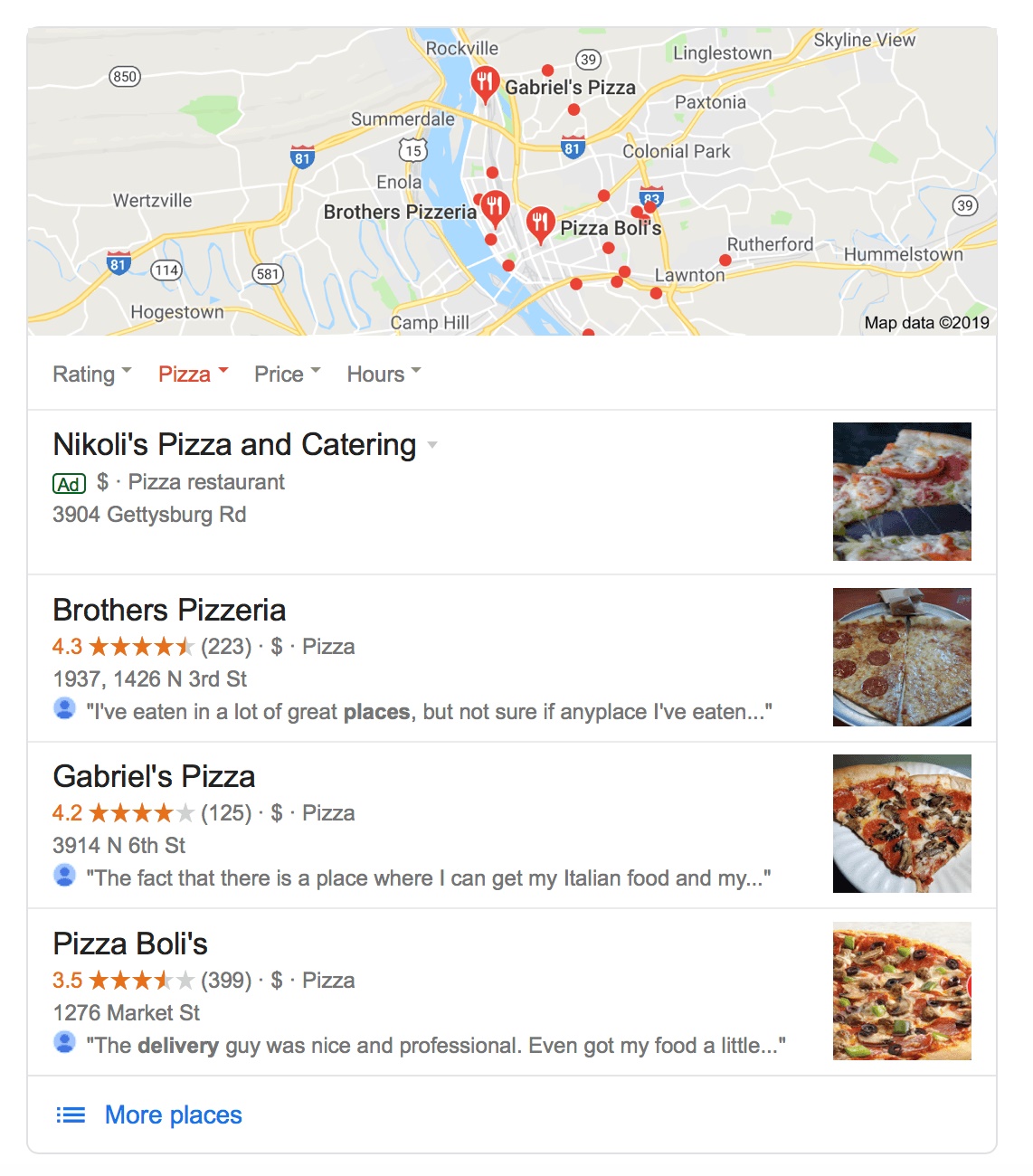
When users perform local searches, they usually turn to the 3-pack of local SEO to find their response. When you optimize your listing you have a great chance to appear in the local 3-pack and generate more local business leads.
4. Run Google local services ads
Google Local Services ads work well for enterprises offering specific services. If your company sells only goods, you’d like to skip the next online advertising tactic on this list ahead.
Companies willing to run advertisements on Google Local Services include Electricians, House Cleaners, Real Estate Agents, Plumbers, movers, Locksmiths, and more.
Once you register for Google’s Local Services, you’ll see if your company qualifies. If you really do, then you can go through the process of signing up. At this point, you’ll provide your position and the services that you’re providing to Google.
Afterward, you’ll set your ad budget. You must decide how much you want to spend each week on having customers. The sum of the budget is flexible and can be adjusted when needed.
Note, you only pay when someone makes contact with your company, not when they click on your ad!
Once you have built your plan, you are going to launch your ad. You’re going to have total control over your ad campaign. Starting and stopping your ad as needed impedes overbooking of your business.
To get the most out of ads on Google Local Services, you’ll want to get the Google Guarantee badge. The Google Guarantee is a sign of faith that contributes to more people preferring your company over the competition.
You will need to supply the following when you apply for the Google Guarantee program:
- Insurance
- License information
- Employee background check
You will have the Google Guarantee badge as long as your documents in order. Because Google supports you, this badge will make customers more willing to choose your company.
5. Create an email marketing stategy to personalize your audience’s experience
Email marketing is a perfect strategy for helping you reach your community. You can send targeted ads to your audience to get them to convert.
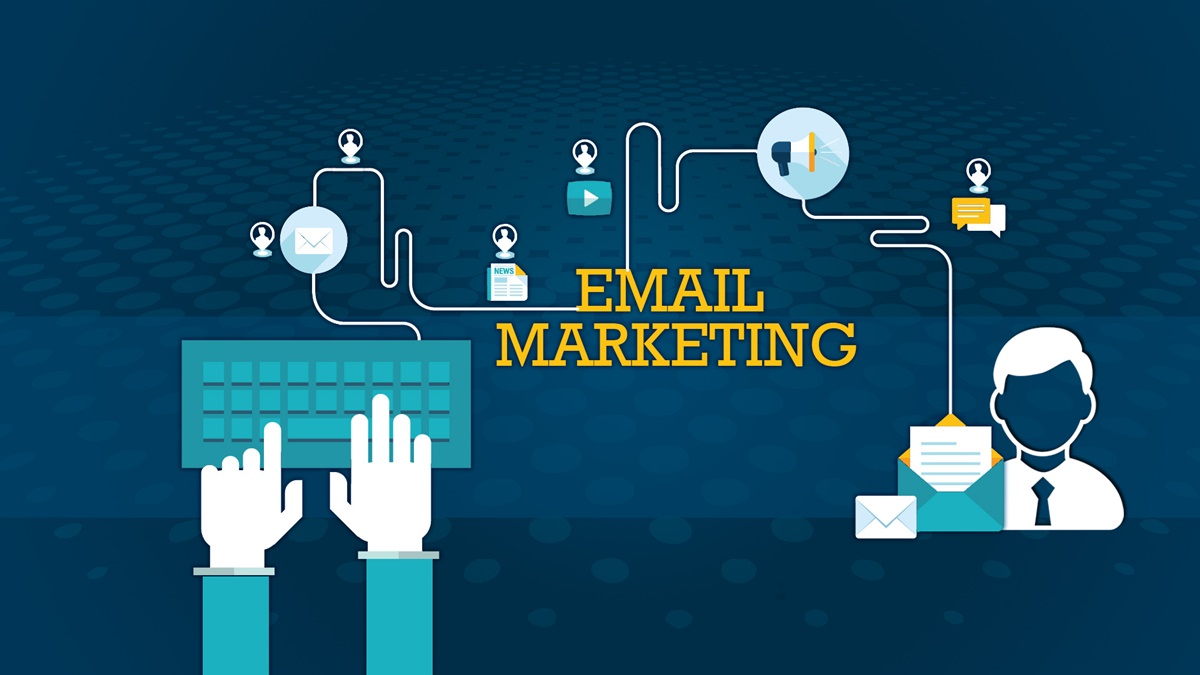
You will need a subscription list to get started with email marketing. You can get subscriptions via your website, in-store, or social media.
You shouldn’t buy subscriber lists while you can. There might only be a small group of individuals willing to engage in your business from these lists. Your emails will end up in spam folders in most cases, and you’ll throw money away.
Receive subscribers organically for the best results.
When you have your subscriber list, start sending them custom-made content.
You can send out ads for your goods, services, and business with email marketing. You’re going to want to classify your audience to ensure you give subscribers an experience that attracts them the most.
You can submit discounts, exclusive offers, and product promotions using emails. It is a great opportunity for you to advertise to subscribers about your business.
When sending promotional material, balance it with the quality of the details. You risk losing subscribers if you send out too many promotions. A compromise between advertising content and information content is making subscribers satisfied.
6. Run retargeted ads to get leads back
Retargeted advertisements are a useful tool to help you get leads back into your business. A lot of people visit your website and don’t convert immediately. They will need more time to think or distract themselves.
You may feel like they’re lost when those leads leave your tab. The truth is that running retargeted ads can bring them back.
Retargeted advertising is an awesome way to promote leads back to the store. You’ll want to add a pixel tracker on your homepage for the use of retargeted ads. This pixel monitors information needed about your customers and the pages they visit.
You do have the choice of using cookies for the retargeting ads. Cookies are small files that are stored on a user’s computer which holds browser data.
The site owner can access the information and take advantage of it for remarketing purposes. Whenever the user leaves your site, they will see your company’s retargeted ad later as they browse the web. The ad should get them to think again about your business and consider buying your product.
Remarketing is a perfect local promotional tactic that helps you encourage leads back to your business.
7. Participate in threads
Another strategy for local online advertising is to get involved in threads. Popular threads such as Quora and Reddit are great advertising spots for your business. Nonetheless, the way you advertise your business needs to be low-key.
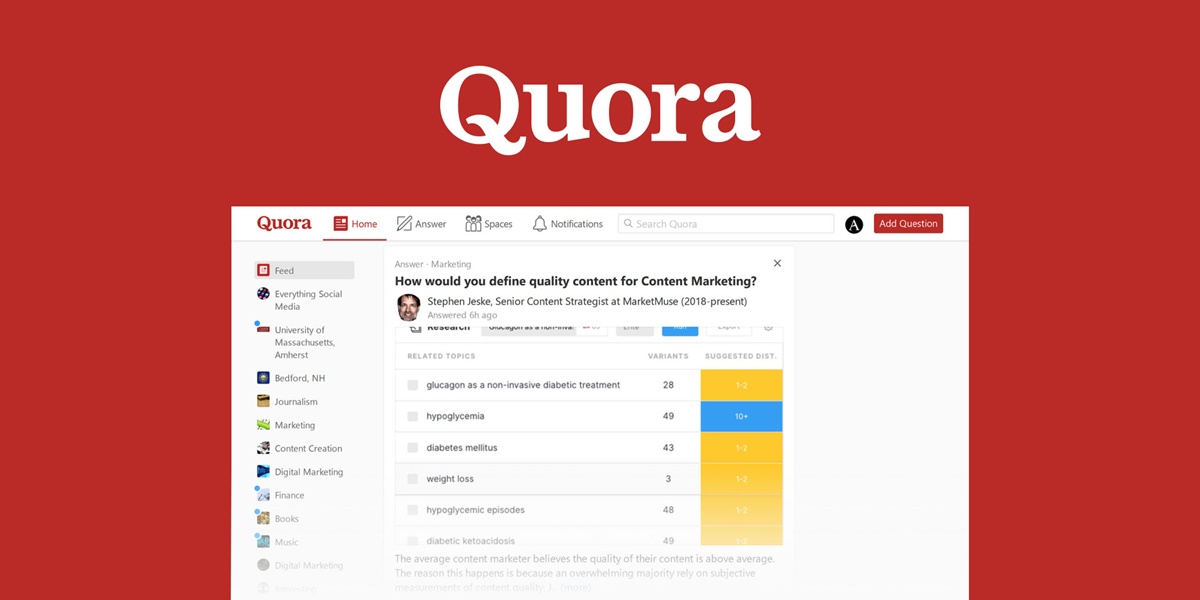
People do not want to see blatant advertising on community threads for your company. When you put an ad in a thread, an adverse reaction would possibly be encountered. It can eventually damage the company and people’s view of it.
Instead, you’ll want to low-key ads. If anyone asks a question about a subject relevant to the industry, then you should address the question.
Let’s assume you’re a florist, and somebody posts a thread that asks for ideas about low-cost wedding flowers that look expensive. If you have content that covers the subject on your blog, you can answer the question and add your article for reference.
It’s laidback but it’s a perfect way to get the company advertised.
Offline local advertising
1. Host local events
You put a large number of customers into your shop when you hold local events. Thus suggest hosting your favorite string quartet, bluegrass party, or death metal band a poetry reading, pub crawl, political fundraiser, city taste, or show.
Tip: put plastic down, those bluegrass wackos can get very wild.
2. Volunteer and get involved locally

Along these lines as launching local events, if you support and volunteer local events, you can get your business noticed by local customers.
Ensure you get a notice for whatever event you’re volunteering for in the publicity materials. Supposing you already have some business-branded swag or clothing, make sure you take advantage of that. Wear T-shirts, branded hats, etc. If you don’t have one, consider investing some of your marketing budgets on this kind of item and you’ll get the benefits of putting the name of your company in front of more potential clients.
3. Hold a workshop or class
And if you don’t find yourself an expert in your area, host an expert or even someone you know who is interesting and insightful. By association, you will be fantastic.
One major benefit of this tip is that it brings more people to your location who might otherwise not be visiting your physical store, and obviously you are getting the word out about your business.
To further extend the advantages, arrange for free marketing/mentions/promotion of your business on its social media channels with any “experts.”
4. Leverage local chambers of commerce and expanding small business centers
Nearly every moderately sized city has a local chamber of commerce and a growth hub for small businesses. These tools will provide local businesses with promotional content and free listings and useful marketing tips and advice from successful business people in your area.
5. Partners with local businesses and mutual promotion
Small companies that stick to each other and help each other get the word out can have tremendous value. You don’t have to spend money, just find what other businesses want you to have, and exchange in kind.
You can hold workshops, events, or webinars together and, should you plan to spend some advertising dollars, divide the costs, and double the exposure.
6. Celebrate ‘strange’ holidays or events with sweet treats or special deals

As an instance, National Doughnut Day is used to boost almost any business with a physical place whether you sell donuts normally or not. Everyone loves donuts, and you can get lots of new customers through your door by giving a free pastry with buy or even a visit. (Think of how many customers frequent car dealerships to “free hot dogs and sodas” events.) Extra-super extra points for a gluten-free product offering.
For extra hype, match these promotions with your social media posts and email sends. This strategy will work for every holiday — just be imaginative about what treats or incentives you want to give away to potential clients.
Presently we know that treatments and prizes are not basically free, but you can use inventory and write it off as a promotional cost if you make or sell food or goods. Whether you are not producing or selling something you might use as a reward, consider giving your services to free winners.
If you’d like to give away something tangible, this seems to be one way you can profit from alliances, bartering and exchanging products and services with other companies in your field (see # 5 above). For instance, swap your tax preparation services with the local pastry store owner in return for a weekly or monthly goodie bag.
7. Print and post physical flyers on group notice boards, college bulletin boards, etc.
Alright, ink and paper printing technically isn’t free, but I bet you already have these tools available at home or in your company.
Certainly, you are going to want to comply with any municipal codes involving the posting of bills or the delivery of solicitations. (For example, stuffing mailboxes is against the law.) Consider handing out flyers in person and so on. You’re going to get to know your audience better and people are more likely to read marketing materials when they see you in person. You could also ask any local students you know to post your flyers on bulletin boards at the local college.
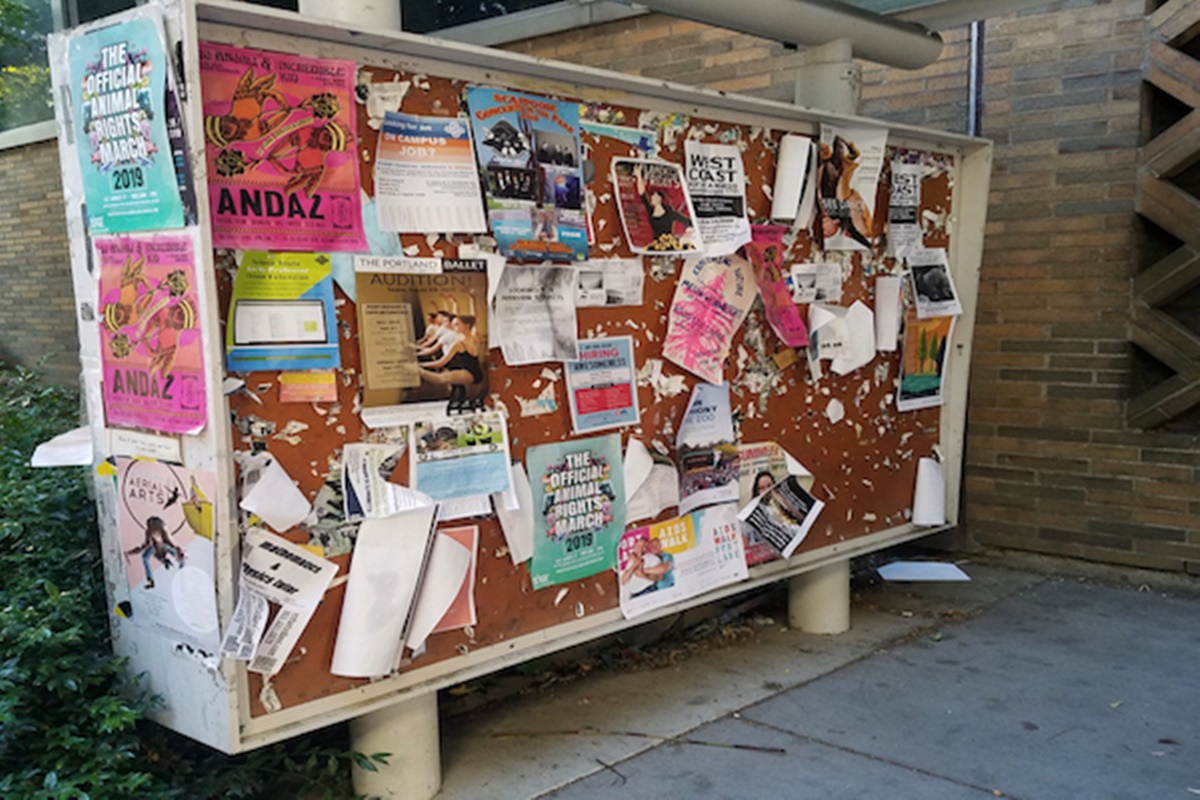
8. Let people use your space
Sci-fi nerds, coffee klatches, book clubs, support organizations for mothers, PTA meetings, automotive enthusiasts groups — whatever that maybe — all need a place to hold meetings, and no one wants to pay.
You could get lots of free word-of-mouth and create goodwill with local customers if you offer your open spaces once per week.
How much does it cost doing local advertising?

It probably comes as no surprise that advertising cost goes up and down depending on your target. Nonetheless, when taking into account online ad costs, there are handy benchmarks to point to. Here are some of them based in CPM (cost per impressions) for the most popular ad platforms, unless otherwise noted.
- Facebook: $1.72
- Instagram: $5
- Microsoft Ads: $1.54 per click
- Google Ads: $2.32 per click
- LinkedIn: $2
- Snapchat: $2.95
Online advertising can cost small businesses thousands per month, so try to ensure you ‘re informed about your decisions when you make them. Ad costs can also change depending on the location, and that is where the targeting of the location comes in.
Local targeting lets you to pick and select other places in which to advertise. This can be directly linked to local marketing.
You can, if you just prefer ads to appear in a certain city, state, country, region, or continent.
What’s great with location targeting is that you can set up advertisements that are more useful to certain markets and make sure you get a more impactful ROI on them. Many ad platforms have the location targeting option, so when evaluating ad space, be sure to look for that.
Furthermore, monitor your analytics when you buy advertising space so you can evaluate efficiency.
HubSpot does have an ad tracking platform within the CRM, when it comes to ad tracking. This does the heavy data collection lifting for you and measures the ROI of your campaigns, enabling you to synchronize the performance with the rest of the campaign in real-time.
How to advertise your business locally for free?
You should set up a free page on Google My Business, which will help you rank higher or first in the search engine results. Here’s how it functions.
Create your Google My Business account.
First of all, you should create a Gmail account for your company. Afterward, you will want to register with that account for Google My Business.
You will be asked to type your company name first. Next, choose the “Delivery Area”. Note that the mileage and location where your target audience resides in this form.
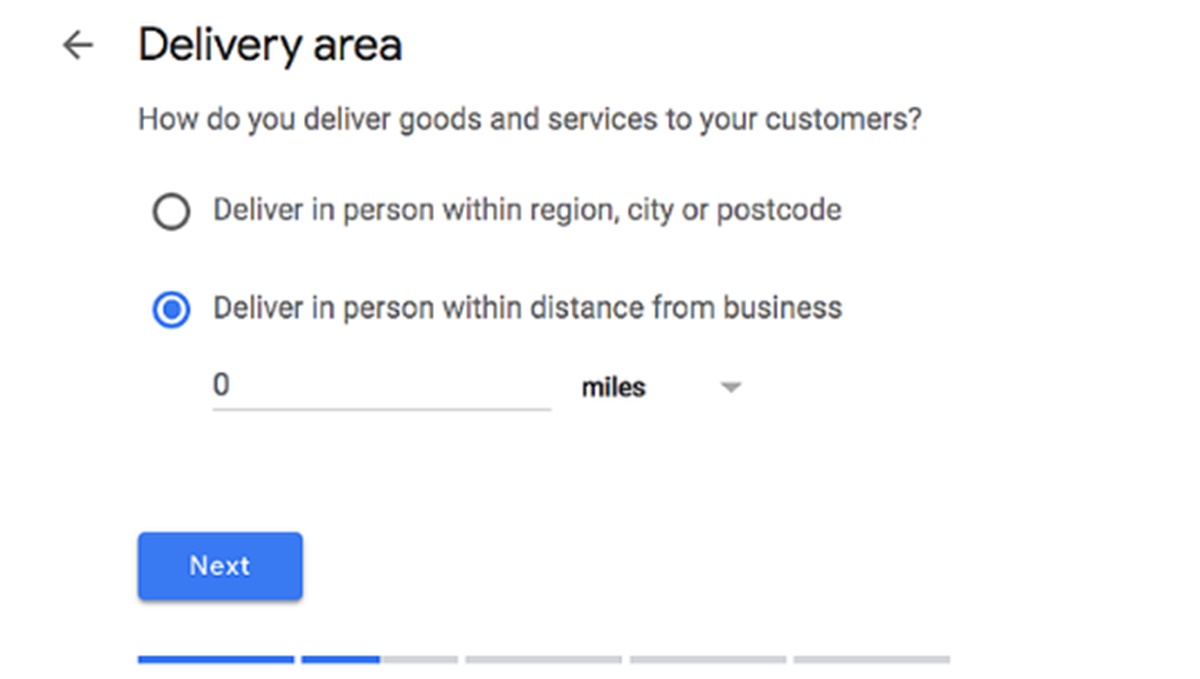
Optimize your business page.
You’ll be able to fill out your profile once your setup process is complete. Ideally, you would like to fill in all Google requests for the best search optimization information as you do this.
There’ll be a few key things you should include:
- An email address, phone number, and other contact information.
- Your logo
- Your address
- Your website
- Operating hours
- A detailed description of what your business offers
- The year your company opened
- Images of the company and goods
- Pricing or menu information
- Other business attributes such as “free Wi-Fi.”
The items above are things that local people may explicitly search for. For instance, if someone is searching for a “cheap Italian restaurant open after 9 pm,” Google will examine the business profile details and prioritize your restaurant if it looks like an awesome match.
Here’s an instance of what it looks like when a Google company fills in all of its information:
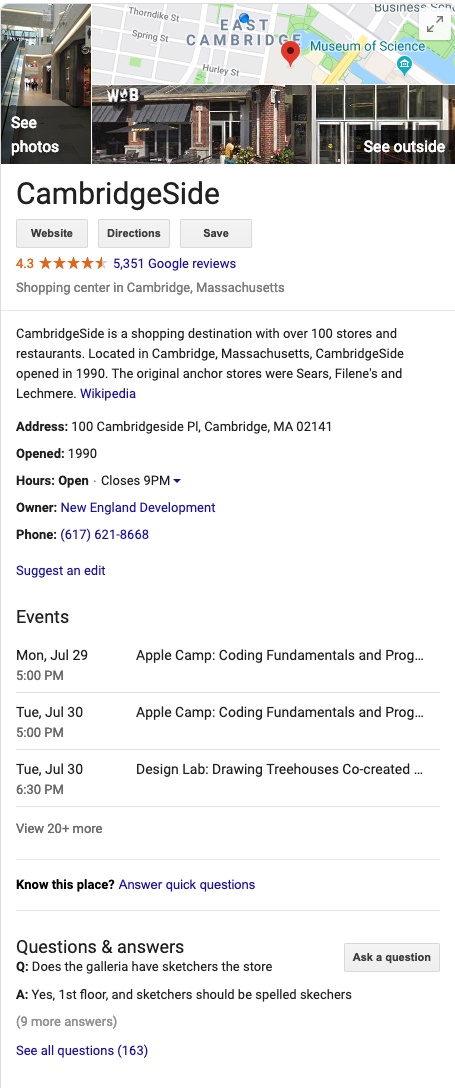
Recommended: How To Add, Remove & Optimize your Google My Business logo
Verify and monitor your business page.
After you’ve built your Google My Business profile, make sure your listing is reviewed so that Google knows it’s a genuine, legitimate company. There are some ways to do this including postcard verification, email verification, and phone verification.
You can also download the GMB mobile app to track how your company is doing. This post will take you through the different verification processes.
Don’t forget about SEO
Leverage free SEO services along with Google My Business can also help your website grow higher in search engine results. These strategies can be easy and simple to work within blogging, web design, or other processes.
Do not allow your advertising budget to determine how many people your business can meet. Today, start putting your advertisement strategy together.
Related posts:
- 13 Types of Advertising to Promote Products
- 11 Best Online Advertising Channels
- Marketing vs Advertising: What are The Differences & Similarities?
- 7 Must-Try Persuasive Techniques in Advertising
Final words
Above are 15 best ideas about Local Advertising for small businesses. Besides, this article also helps you get more information about the cost of doing local advertising. Beneficially, you can refer to how to advertise your business locally for free that AVADA provides.
New Posts






